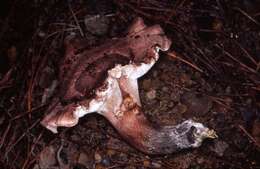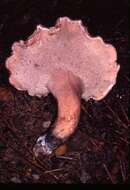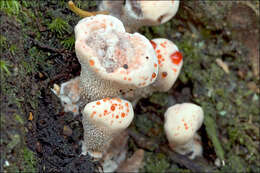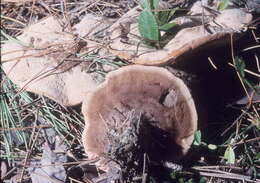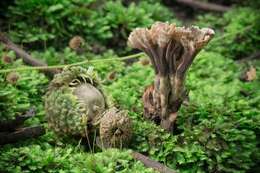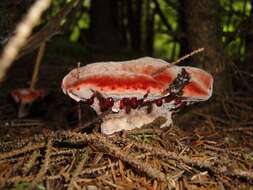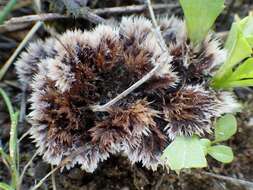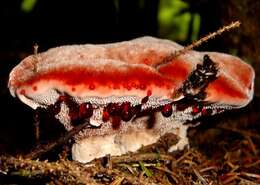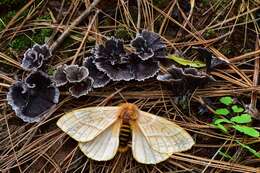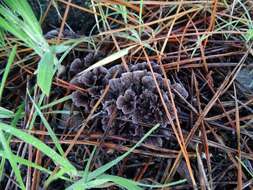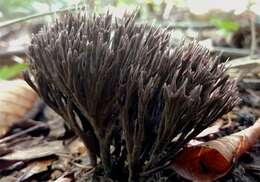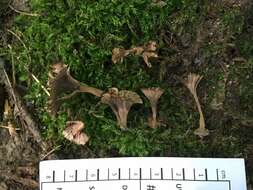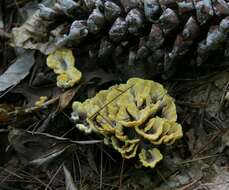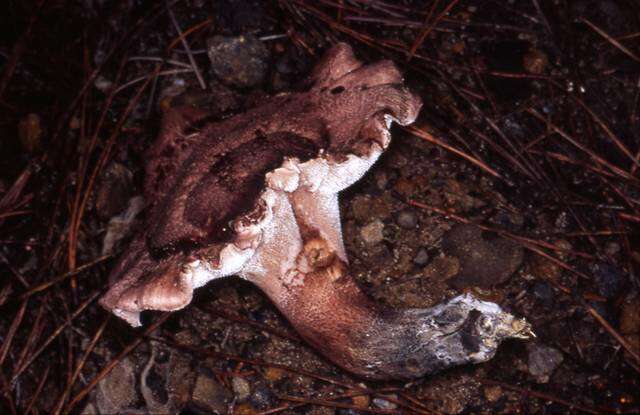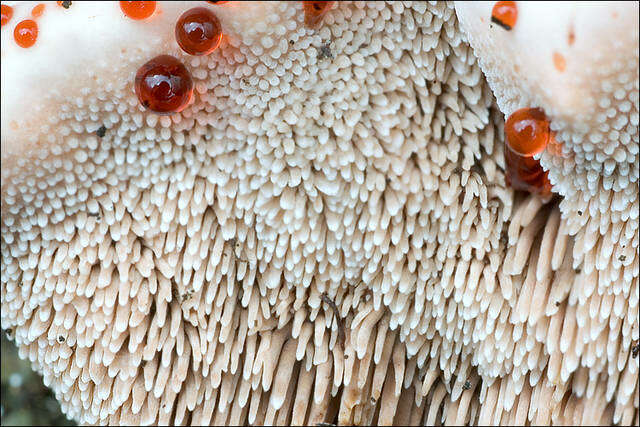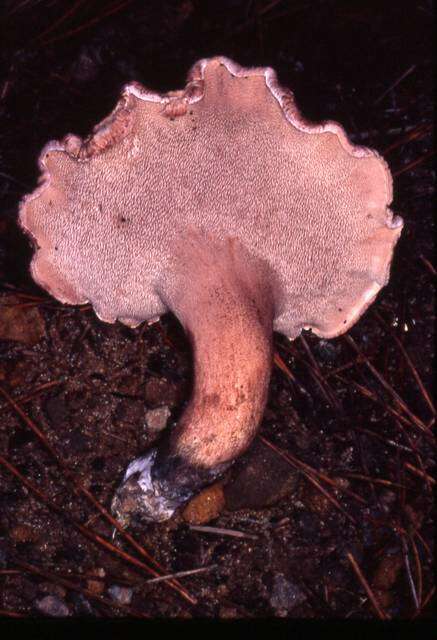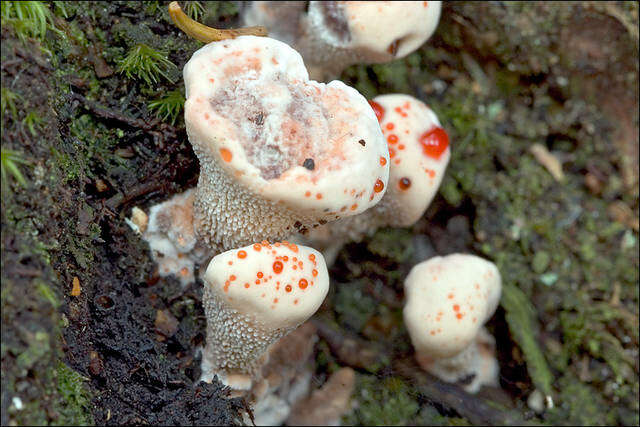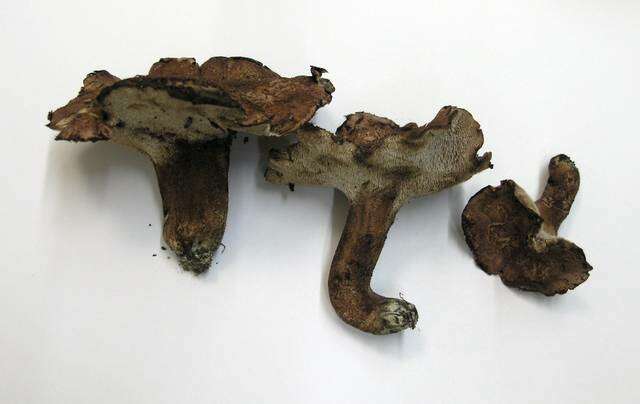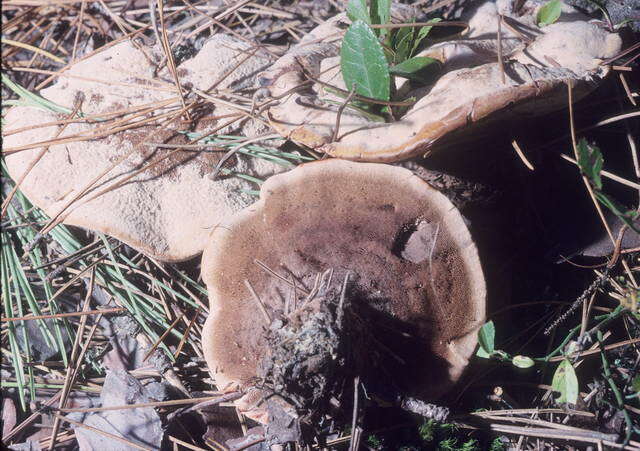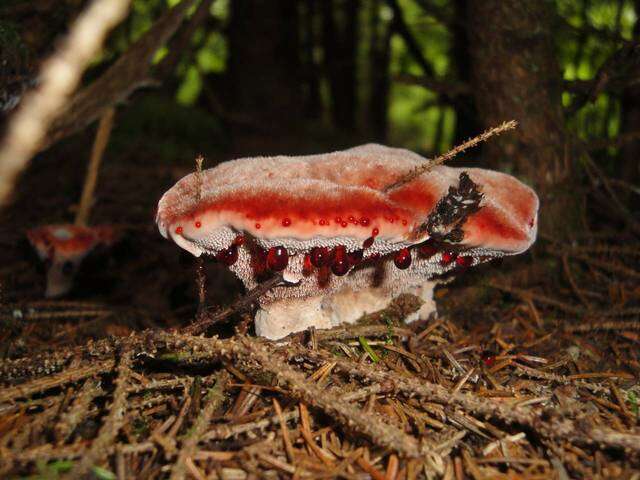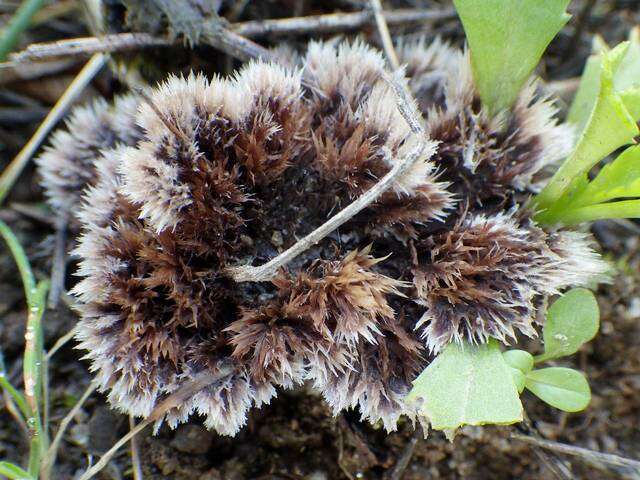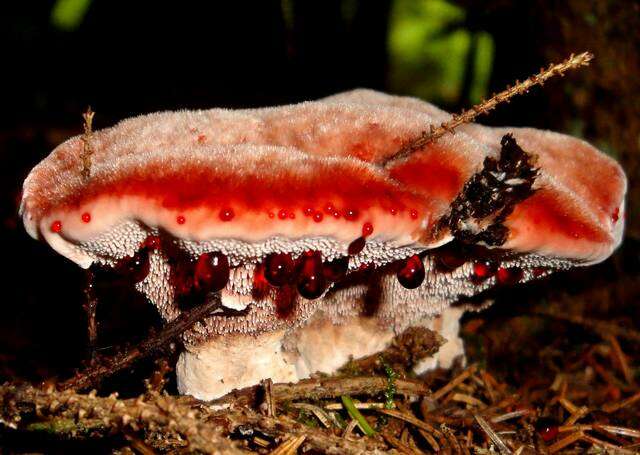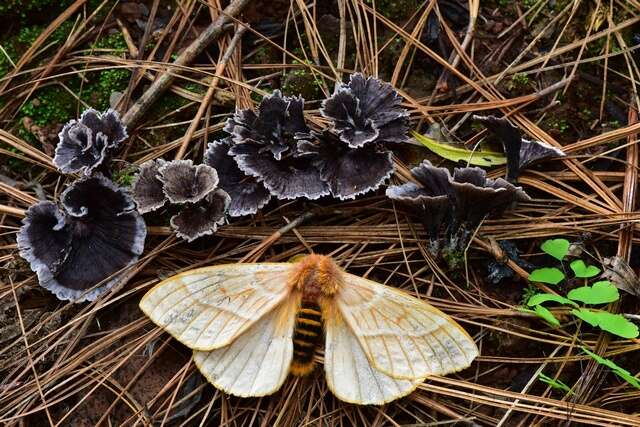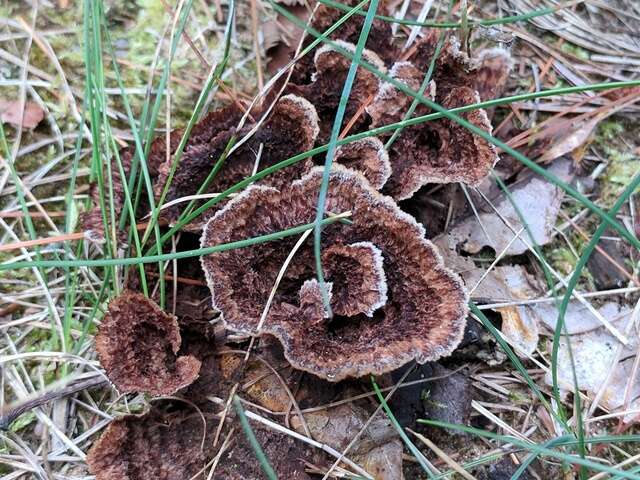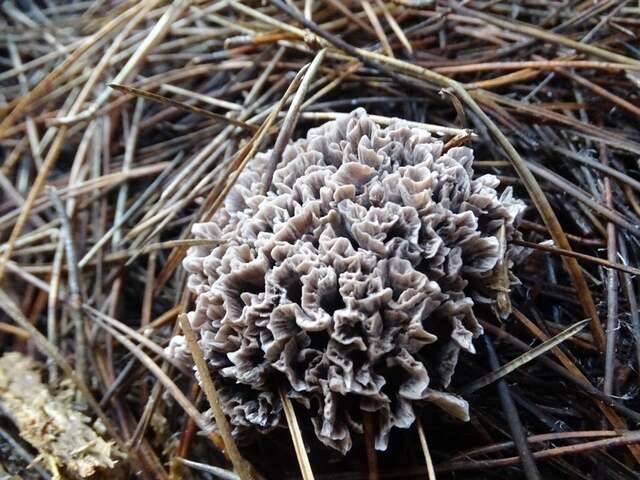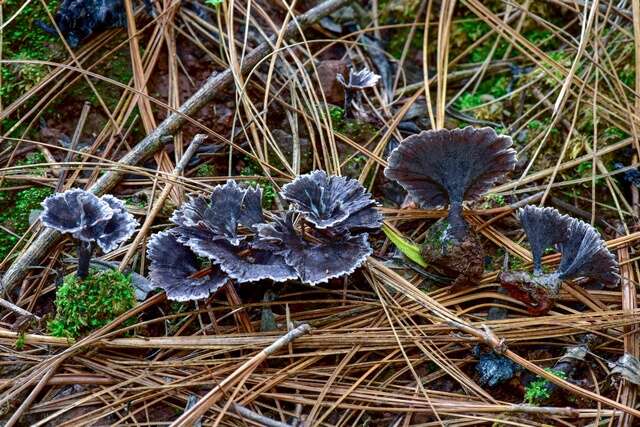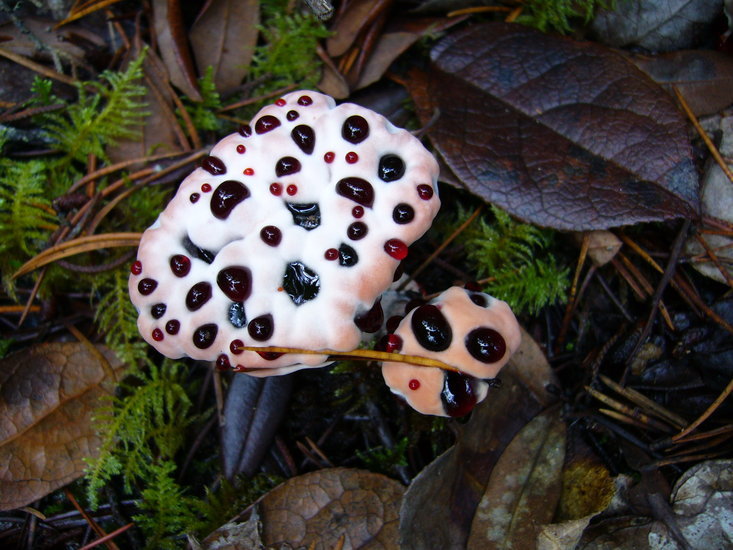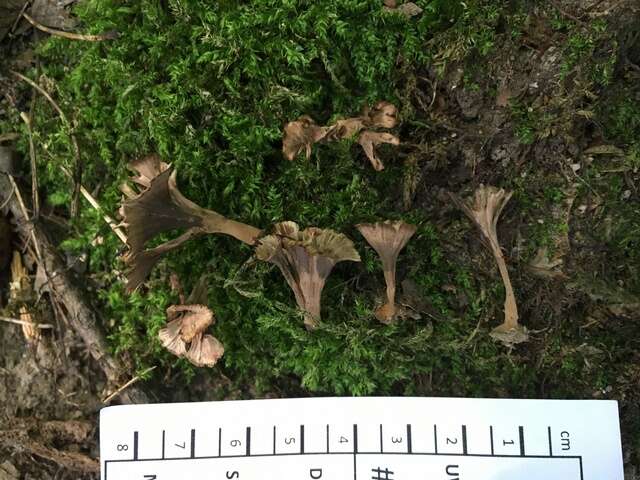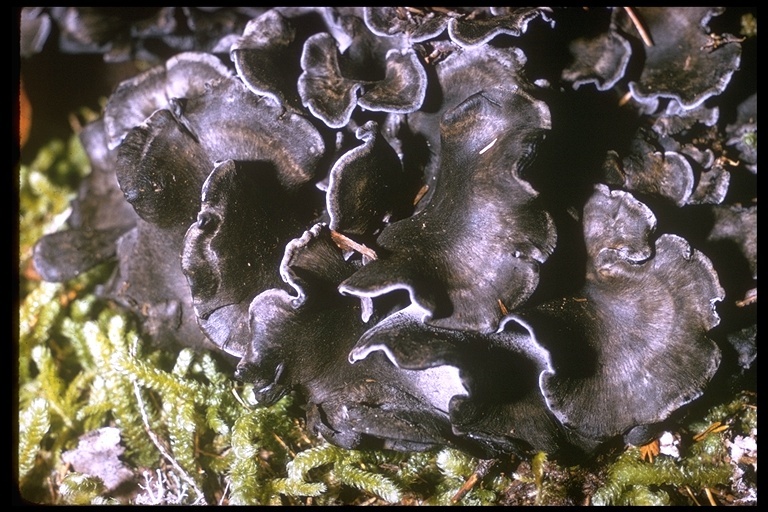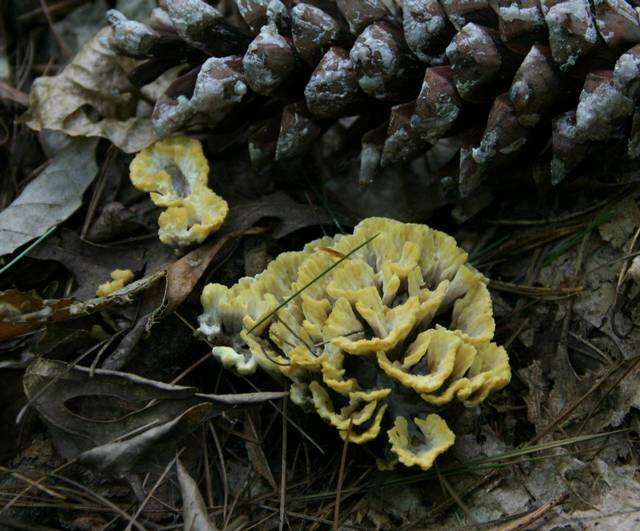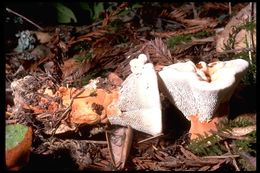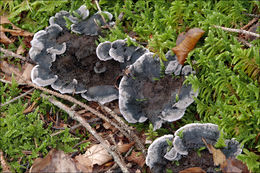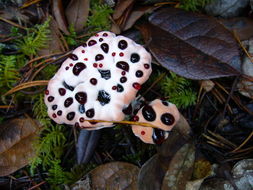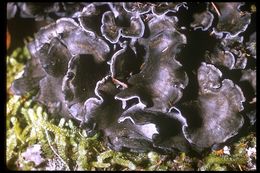
Slo.: rni plutozob - Habitat: young mixed forest on alluvial deposits of nearby mountain torrent, Fagus sylvatica and Picea abies dominant trees; slightly southeast inclined terrain, calcareous ground; relatively warm and dry place, in shade, partly protected from direct rain by tree canopies; average precipitations ~ 3.000 mm/year, average temperature 7-9 deg C, elevation 630 m (2.070 feet), alpine phytogeographical region. - Substratum: moss covered forest soil under Picea abies. - Comments: In Germany Phellodon niger has already disappeared from many historically known locations in and around industrial regions (Ref.:2.). The causes are acid precipitations, other airborne toxins and eutrophication of forest ground. The species is worldwide distributed but rarely common. It is generally in sharp decline and much endangered in Europe (Ref.:2). - About 20 pilei growing solitary and in groups of several partly confluent fruit bodies; pilei diameter 5 - 8.5 cm, spines are dense and from 2 to max 3 mm long; stipe is not well defined, interwoven with surrounding organic ground debris, about 1-2 cm in diameter and 1.5 cm long, tapering toward the base, looking like a thick root; taste mild, mushroomy, not bitter; smell indistinctive; flesh corky-woody, charcoal black; SP whitish-beige, oac851. - Spores coarsely warty. Dimensions:3,6 [4 ; 4,1] 4,5 x 3,1 [3,4 ; 3,6] 3,9 mm; Q = 1 [1,1 ; 1,2] 1,3; N = 30; C = 95%; Me = 4 x 3,5 mm; Qe = 1,2. Olympus CH20, NEA 100x/1.25, magnification 1.000 x, oil. AmScope MA500 digital camera. - Herbarium: Mycotheca and lichen herbarium (LJU-Li) of Slovenian Forestry Institute, Vena pot 2, Ljubljana, Index Herbariorum LJF - Ref.: (1) M. Bon, Parey's Buch der Pilze, Kosmos (2005), p 312. (2) G.J. Krieglsteiner (Hrsg.), Die Grosspilze Baden-Wrttembergs, Band 1. Ulmer (2000), p 384. (3) S. Buczacki, Collins Fungi Guide, Collins (2012), p 472. (4) D. Arora, Mushrooms Demystified, Ten Speed Press, Berkeley (1986), p 629. (5) J. Breitenbach, F. Kraenzlin, Eds., Fungi of Switzerland, Vol.2. Verlag Mykologia (1986), p 228. (6) W. Rothmaler, Exkursionsflora von Deutschland, Vol.1, Niedere Pflanzen, Elsevier, 3.Auflage, (1994), p 349.


